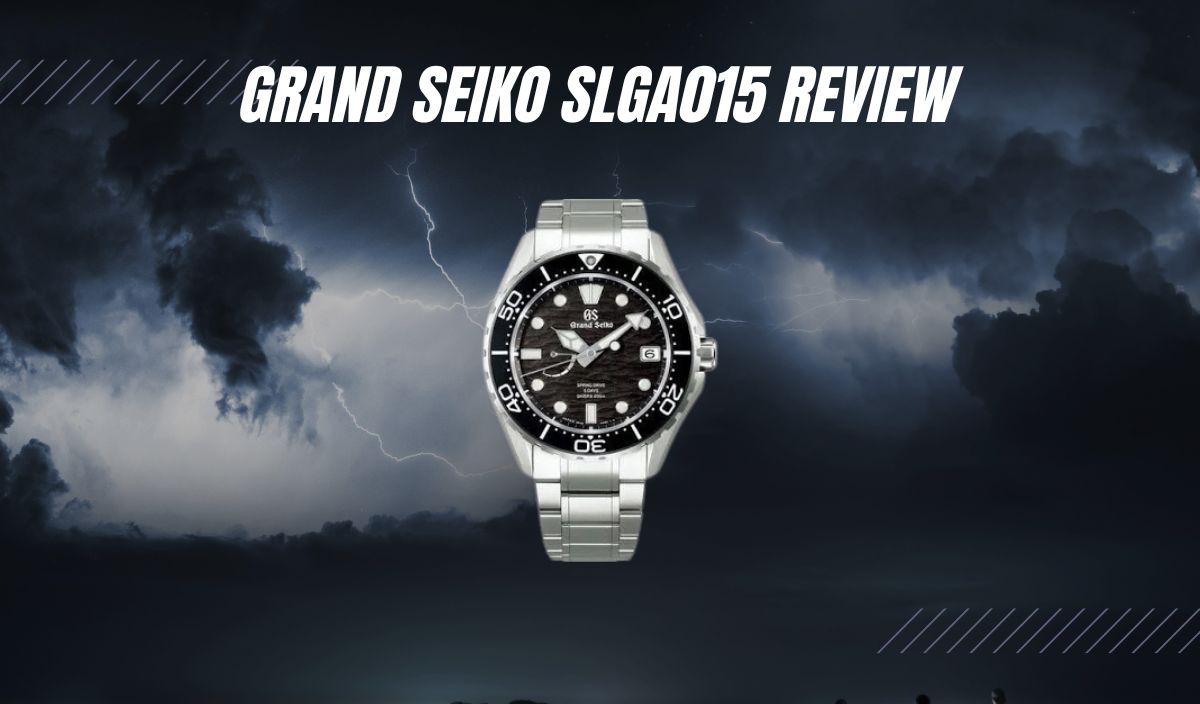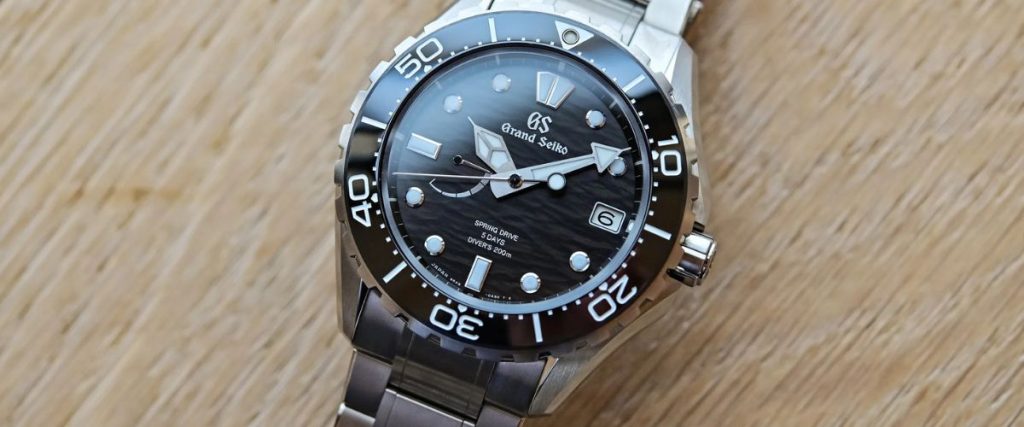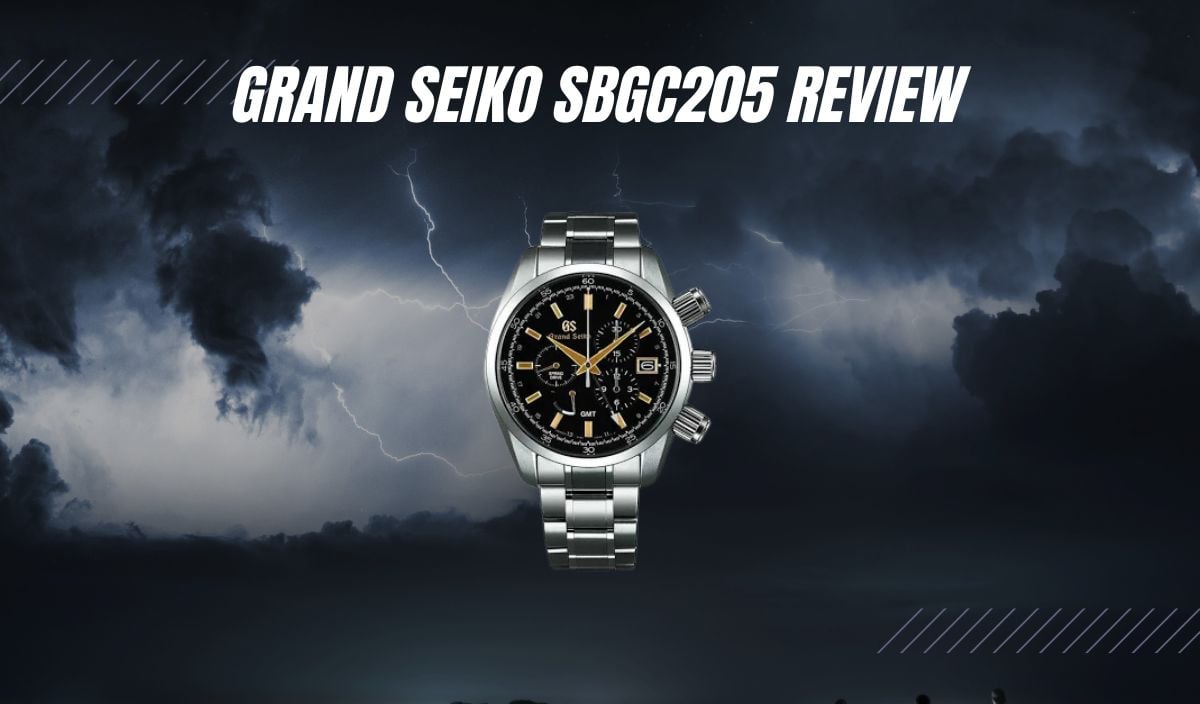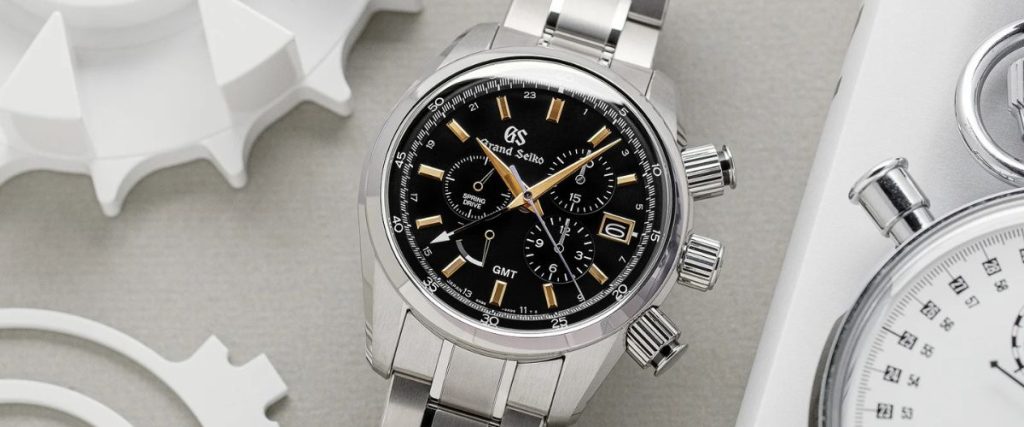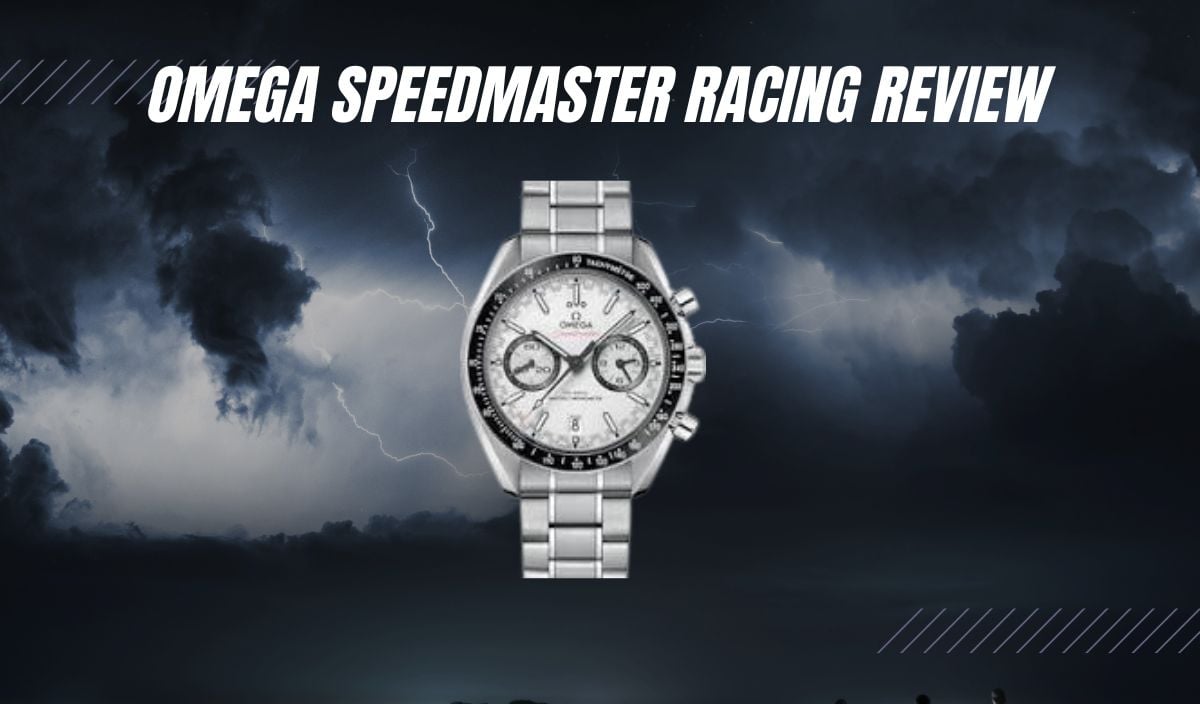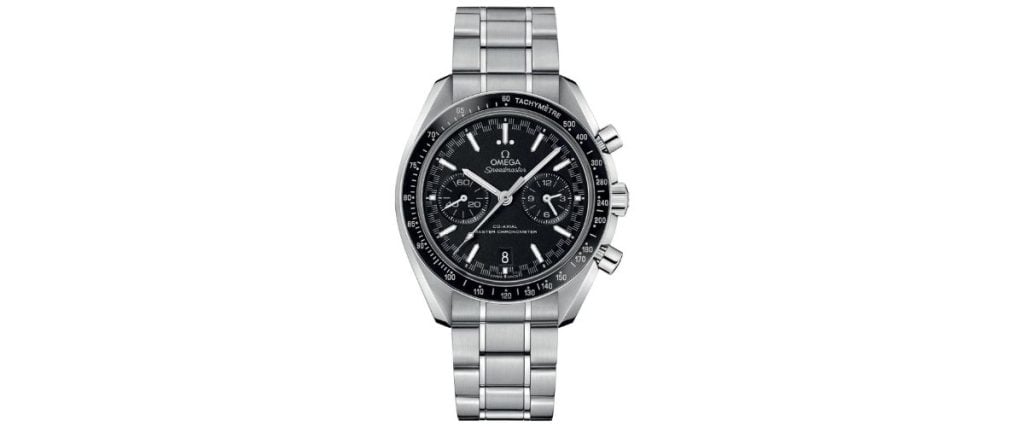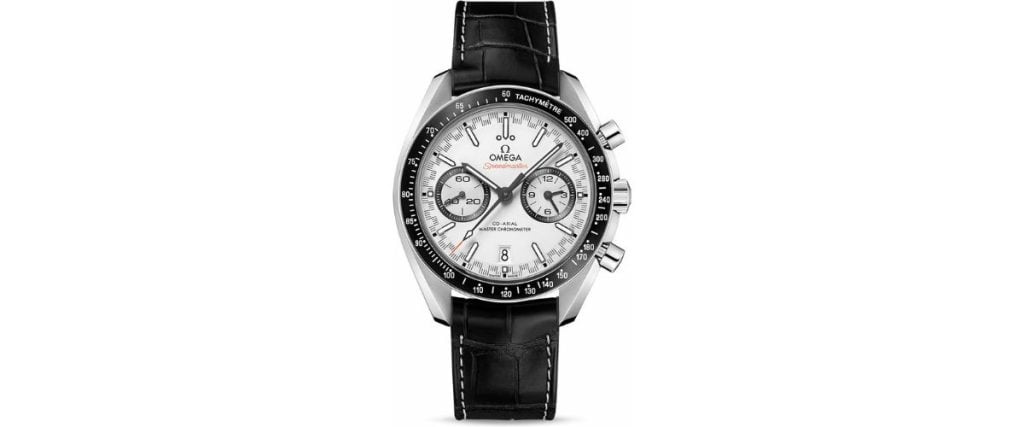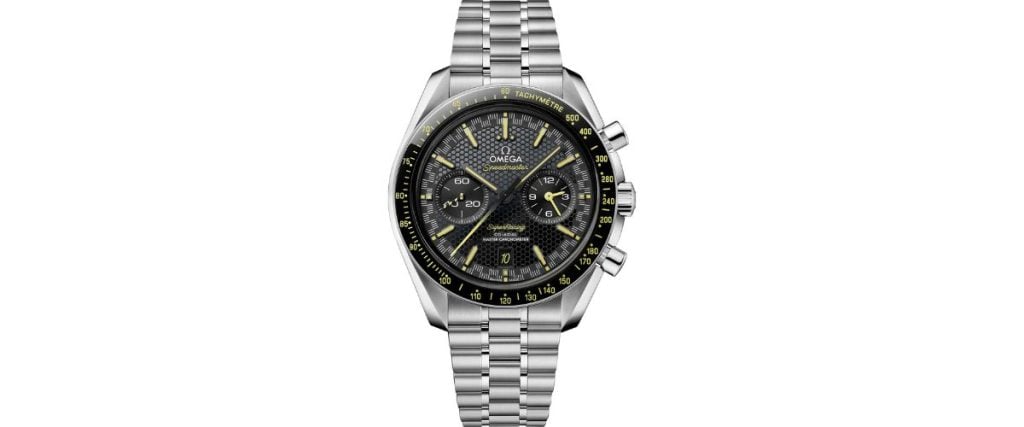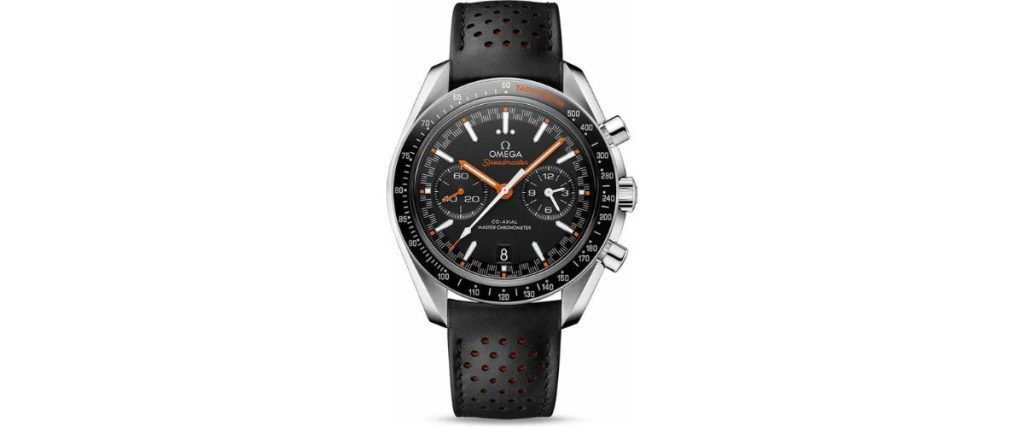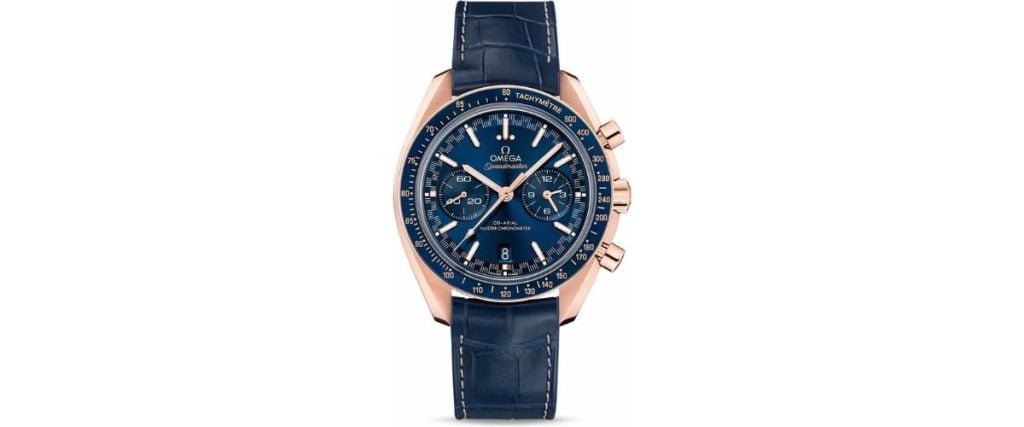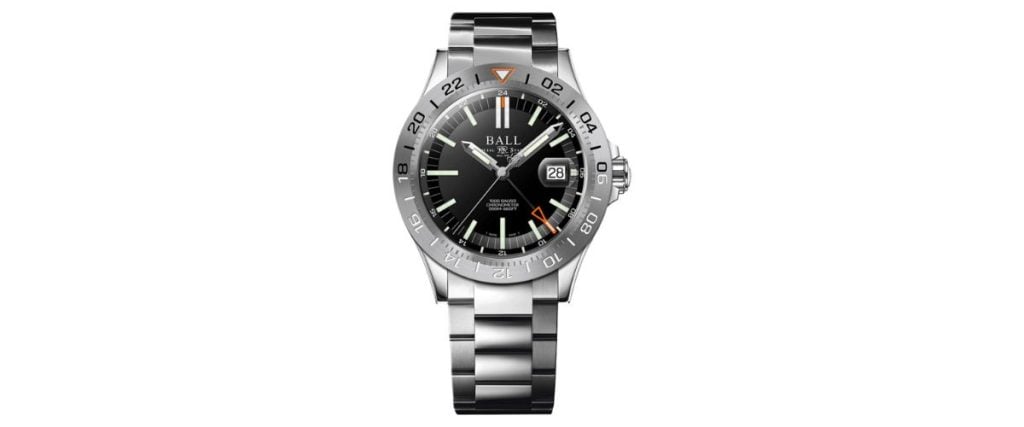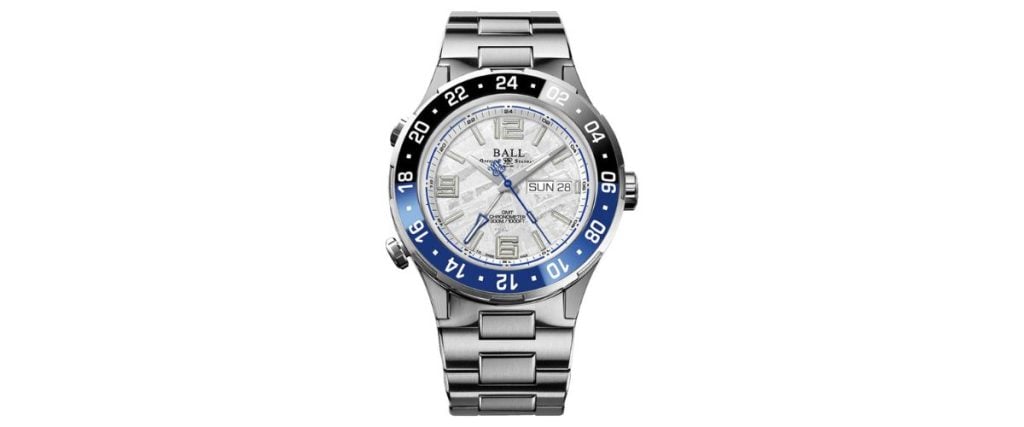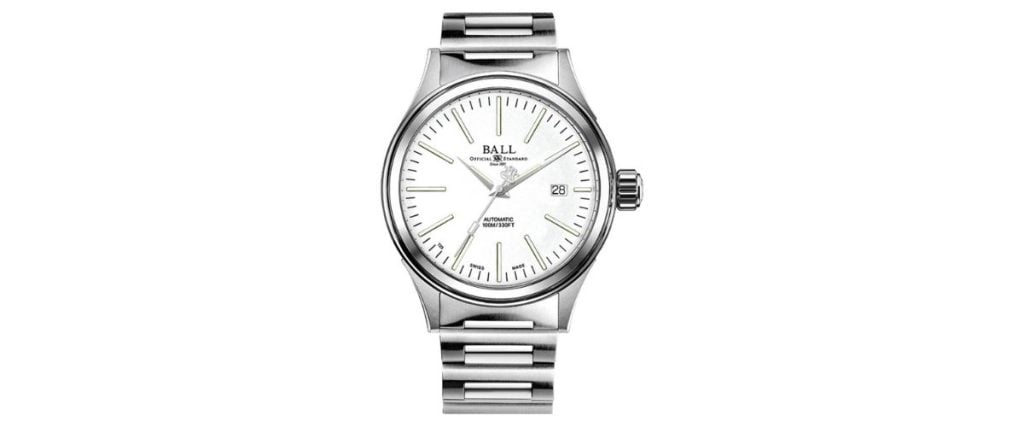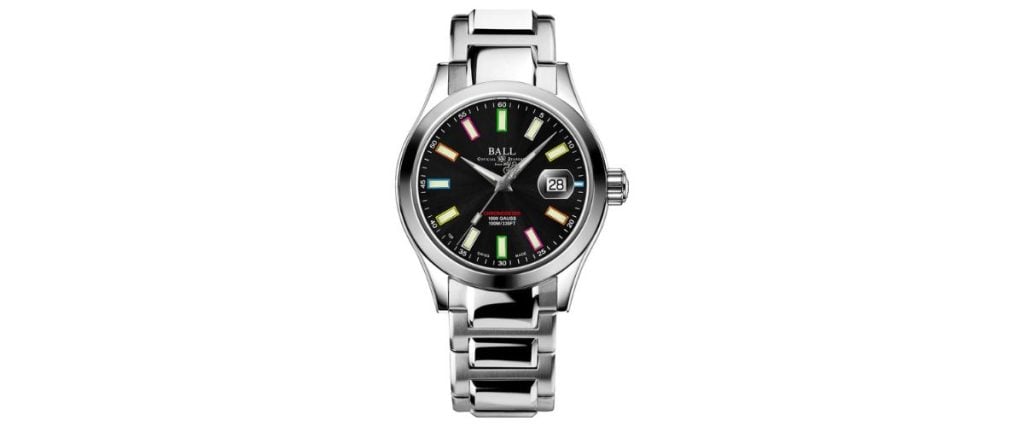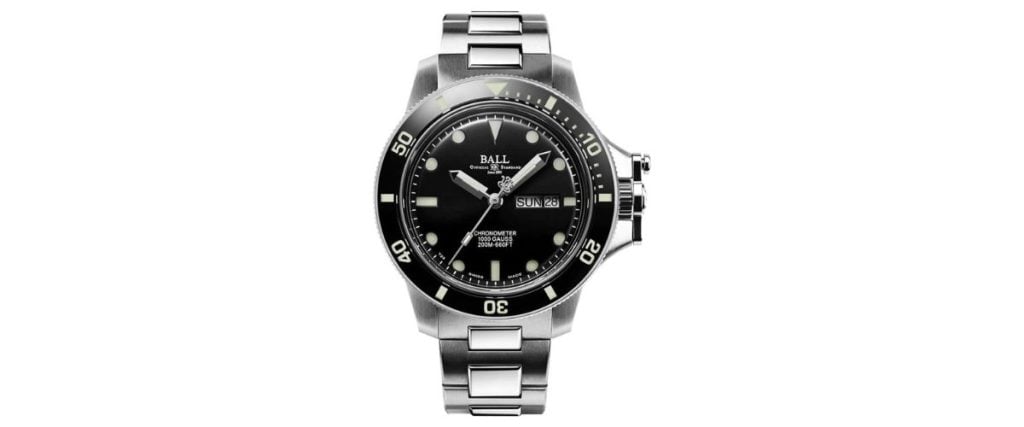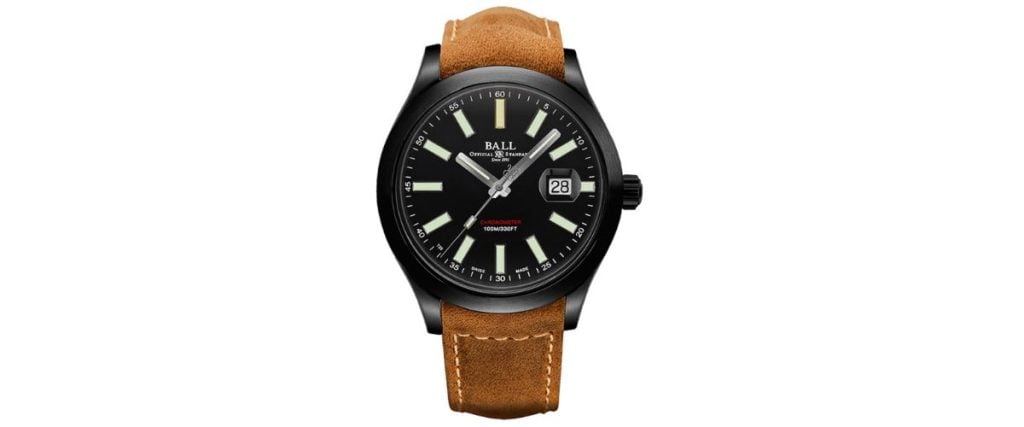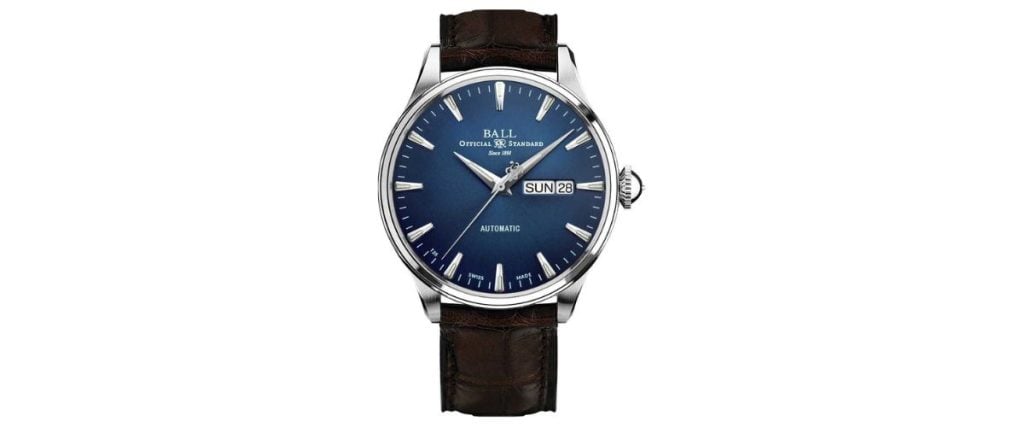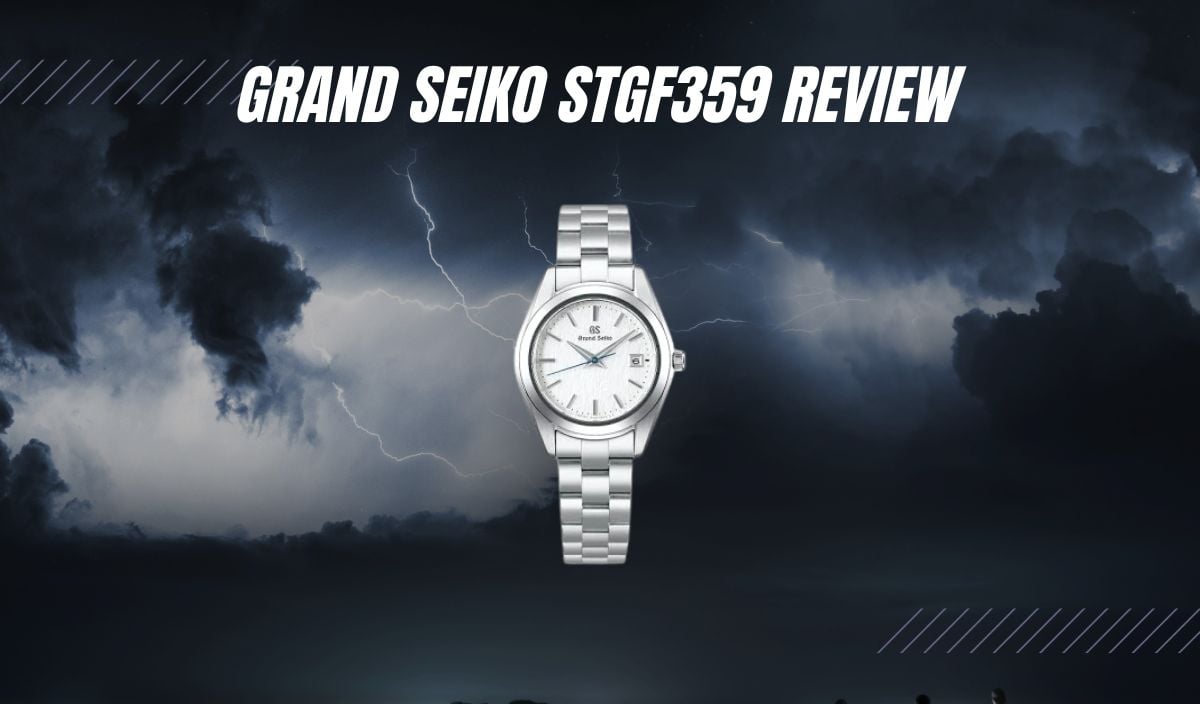
I’m quite happy to admit I’m a Seiko fan girl. The majority of my collection is made up of designs from this Japanese watchmaker, including several 5 Sports, Presage, Prospex, and Grand Seiko models. But most of the watches I own aren’t actually marketed towards my wrist.
By this, I mean these watches are typically 38mm or above in diameter – but as a lover of an oversized timepiece, this isn’t something that puts me off at all. But, since Seiko and their luxury counterpart company, Grand Seiko, lack a lot of smaller women-orientated watches, it has sadly meant a lot of women – and men with smaller than average wrists – have missed out on an opportunity to wear one of these incredible timepieces.
That’s not to say there are no 35mm and below Grand Seiko watches out there because there are. But the selections are a little limited. It’s why you’ll often find small-wristed folk opting for the wider selections of women’s watches offered by the likes of Rolex, Omega, and Longines.
This is a shame because more women deserve to own and wear the beauty of a Grand Seiko watch. So, if there was one Grand Seiko ladies watch worth a second look, which one would it be? In my opinion, the Grand Seiko Heritage “Snowflake” STGF359 is up there on the list.
The Importance of a Grand Seiko Ladies Snowflake
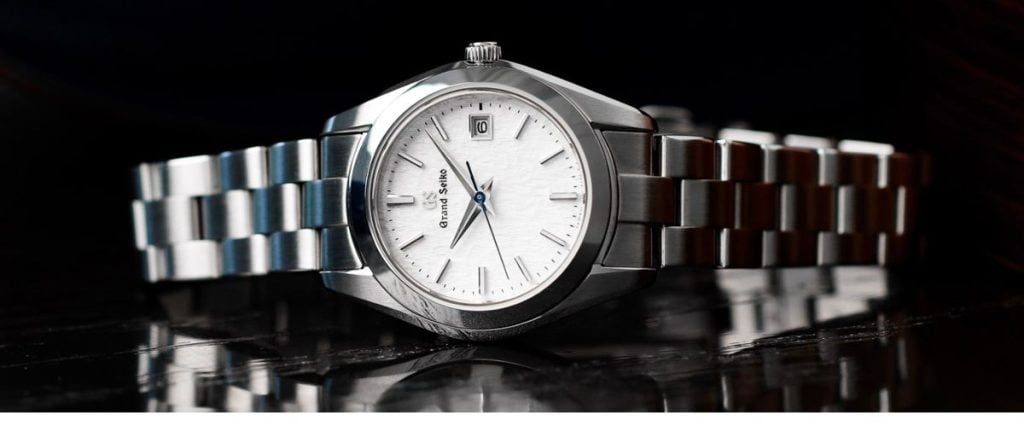
Okay, so let’s talk about the Grand Seiko Snowflake dial and why bringing the crisp white textured centerpiece into a lady’s watch was one of the best decisions Grand Seiko could have made.
The Snowflake, originally launched in 2010, captured the hearts of watch lovers all around the world with its unique dial that beautifully resembles the look of freshly fallen snow. The texture is delicate yet strikingly beautiful, representing the serene beauty of winter in Japan.
Because of its unique look, the Grand Seiko Snowflake watch has since become one of the Japanese watchmaker’s best-selling timepieces. But sadly, before the launch of the Grand Seiko Heritage “Snowflake” STGF359 I’m reviewing today, the dial was typically housed within cases of 38mm to 40mm wide.
So, by introducing a women’s version of the Snowflake, Grand Seiko has not only satiated those of us with smaller wrists but also opened the door for more women to step into the extraordinary world of Grand Seiko and, in turn, fall in love with more Grand Seiko watches.
It’s a genius move from Grand Seiko if you ask me. It’s not just about creating a smaller watch – which, of course, we all appreciate – but it’s also about inviting more women into the landscape of luxury horology, allowing more people to appreciate the craftsmanship and elegance that Grand Seiko represents.
Grand Seiko’s Smallest Case
So since one of the biggest selling points of the Grand Seiko Heritage “Snowflake” STGF359 watch is its dimensions, let’s start there. This release is one of Grand Seiko’s smallest dress watches, sized at 28.9mm wide and with a thickness of just 8.7mm. It also has a compact lug-to-lug width of 35.4mm. It wears incredibly well on my five-and-a-half-inch wrist, feeling comfortable and unobstructive.
Without naming names, there are several watch brands I know of that tend to skimp on some of the finer details of their women’s watches. Thankfully, Grand Seiko is not one of them. They’ve constructed the Grand Seiko Heritage “Snowflake” STGF359 watch with all the high levels of detailing and finishing you’d expect to find on their larger men’s watches.
For starters, the case is almost entirely Zaratsu polished, a meticulous process that involves hand-polishing each surface to achieve a flawless, mirror-like finish. It’s a technique that takes up to three years to learn, seeing talented artisans hold the precious stainless steel metal against a spinning tin plate at a precise angle and with just the right amount of pressure.
In addition to the Zaratsu polishing, there are also satin-brushed elements, mainly on the bracelet and the tops of the gently curved lugs. These satin-brushed finishes introduce a subtle contrast to the polished surfaces, adding depth and complexity to the overall design. This combination of finishes helps to enhance the dressy appeal of the design, bringing most of your attention to the bright polished surfaces.
In a similar fashion, the dual-curved sapphire crystal glass placed on top cleverly brings your attention to the Snowflake dial at the center. The glass, with its seamless flow from case to dial, enhances the overall aesthetic and places the unique textures and details front and center.
Sapphire crystal glass is also well-known for its durability and scratch resistance, making it ideal for those of you who want a luxury watch that will last. The inner surface features a layer of anti-reflective coating to help minimize glare, which helps you appreciate the snow-like texture of the dial even further without any distractions.
The case of the Grand Seiko Heritage “Snowflake” STGF359 watch is completed by a gently knurled crown at 3 o’clock engraved with the GS logo and a screw-down case back beautifully embossed with the Japanese brand’s logo and their iconic lion emblem in relief.
Together, the crown and case back warrant a healthy 100-meter water resistance, so having this watch out in the rain or on the wrist while watching dishes won’t be a problem.
The Snowflake Dial
While the case dimensions of the Grand Seiko Heritage “Snowflake” STGF359 watch are certainly a major attraction for those of us with smaller wrists, the real star of the show is, without a doubt, the iconic Snowflake dial.
This mesmerizing dial has become synonymous with Grand Seiko, arguably putting the brand on the map for many collectors. What I truly appreciate about this watch is that Grand Seiko has ensured that the women’s version is just as spectacular as the men’s offerings without any compromises in design or craftsmanship.
The Snowflake dial maintains the classic aesthetic that collectors adore, with its enchanting texture that mirrors freshly fallen snow. It’s one of those dials that draws you in, captivating your attention and mesmerizing you. Honestly, it can be a bit dangerous for me to wear a watch like this, as I often find myself staring at it rather than focusing on whatever task is at hand!
Another thing I love about the Grand Seiko Heritage “Snowflake” STGF359 watch’s dial is the simplicity of its layout. Unlike some of the larger models in the Snowflake family, this model doesn’t feature a power reserve indicator between the 7 and 8 o’clock marker. Instead, this release focuses solely on presenting the time and date.
This design choice was probably forced upon Grand Seiko’s designers due to the lack of room available on such a small watch. But I’m glad that was the case since it’s a choice that adds to the watch’s elegance and allows the texture of the dial to take center stage.
In keeping with Grand Seiko’s commitment to craftsmanship, all the hands and markers on the Grand Seiko Heritage “Snowflake” STGF359’s dial are Zaratsu polished, contributing to its luxurious feel. The hour and minute hands are elegantly shaped, sharp, and sword-like, catching the light beautifully as they sweep across the dial.
Each hour marker is hand-faceted, showcasing the meticulous attention to detail that Grand Seiko is renowned for. The seconds hand is the only real touch of color, finished in stunning blued steel. Finally, the border around the date is polished and outlined in silver, framing the black-on-white date wheel with precision.
A Highly Accurate Quartz Movement
The Grand Seiko Heritage “Snowflake” STGF359 is powered by the Caliber 4J52 movement, a quartz caliber crafted in-house by Seiko. I have to be honest; part of me feels a little disappointed that they released this Snowflake women’s watch with a quartz movement instead of a mechanical one.
After all, Grand Seiko is renowned for its exceptional mechanical watches, and it would have been a dream to see this stunning design powered by none other than a Spring Drive movement. However, the 4J52 is a trusted quartz caliber with impressive accuracy, with a deviation of no more than ±10 seconds per day.
This precision is a significant selling point for the watch, making it an excellent choice for those who appreciate reliability in their timepieces. Plus, it’s one of the reasons this particular Grand Seiko model is among the most affordable options in the lineup. While I would have loved to see a mechanical movement here, I understand the considerations at play. The Spring Drive mechanism, while brilliant, has certain limitations in terms of size.
For now, I’m content to embrace the accuracy and dependability of the Caliber 4J52. It provides peace of mind that I won’t be constantly adjusting the time, plus I can easily take it off the wrist for several days at a time without ever having to twist the crown or shake up the movement to get its power pumping. And who knows, perhaps one day Seiko will create a smaller version of their Spring Drive for us small-wristed folk.
Straps
The stainless steel bracelet is a nice and expected complement to the Grand Seiko Heritage “Snowflake” STGF359 watch. It is predominantly engineered with satin-brushed surfaces and Zaratsu polished sides that catch the light beautifully. The polished sides are a particularly nice touch, especially for their slightly rounded silhouette, which not only ensures a comfortable fit on the wrist but adds an extra touch of luxury and sophistication to the design.
Following the classic Oyster design, this bracelet is narrower than standard GS models, which suits the delicate nature of the women’s Snowflake watch perfectly. The links lead down to a standard folding clasp embossed with the Grand Seiko logo in relief.
It’s worth noting that the clasp lacks micro-adjust holes, which could make finding that perfect fit a bit more challenging. However, the design does come with drilled lugs, so strap changes are made easy. That means that if you want to switch things up, you can easily find alternative straps, like a nice leather band, to fit the 14mm lug width without problem.
On-Wrist Experience
Finally, let’s discuss how the Grand Seiko Heritage “Snowflake” STGF359 wears on the wrist and how it felt on me this past week. First of all, this watch is ideal for everyday practicality.
It’s barely noticeable on the wrist when your sleeves are rolled down thanks to the compact dimensions — 28.9mm in diameter, 35.4mm lug-to-lug, and only 8.7mm in thickness – and the quartz movement. It’s almost weightless because of the latter, allowing it to disappear seamlessly on the wrist.
And yet, despite this, once the sleeves are rolled up, that Snowflake dial has a quiet confidence that attracts just the right amount of attention. The beautiful crisp white texture is a sight to behold, and during my time wearing this model, I received so many compliments on it.
Because of this, although it wears effortlessly as a daily beater, you could easily get away with using this as a formal dress watch too. In fact, it’s the perfect one-watch collection, working well for pretty much any situation.
As for what wrist size best suits the Grand Seiko Heritage “Snowflake” STGF359 watch, that ultimately comes down to how prominent you want the watch to appear. I have a five-and-a-half inch wrist, and it sat perfectly on my arm without feeling over or undersized.
If you have smaller wrists and love something even daintier, then this would be the perfect watch for you. On the other hand, if you have large wrists but love the vintage look a small watch gives, then you’ll love it just as equally.
Price & Availability
As previously mentioned, the Grand Seiko Heritage “Snowflake” STGF359 watch is one of the Japanese watch manufacturer’s most affordable models, retailing brand new for $2,300. If you want to purchase this model brand new, a quick word of warning: be sure to order from an authorized Grand Seiko retailer like Exquisite Timepieces.
At least then, you’ll know you’re getting a genuine Grand Seiko watch with all the official paperwork and warranty. This is a watch also available on the second-hand market, typically selling for around $1,500. The watch remains a permanent addition to Grand Seiko’s women’s collection and is not a limited edition.
Conclusion
If you couldn’t tell, I think the Grand Seiko Heritage “Snowflake” STGF359 watch is beautiful and well-thought-out. But most importantly, I think it’s a wonderfully significant addition to the watch world. It brings one of the industry’s most coveted dials to women in a beautiful, compact form.
This design not only satisfies collectors like myself but also entices new female enthusiasts into the horological community. Could this watch be improved by a mechanical movement? Yes. But do its small dimensions and insanely reasonable price point make up for that? Absolutely.









